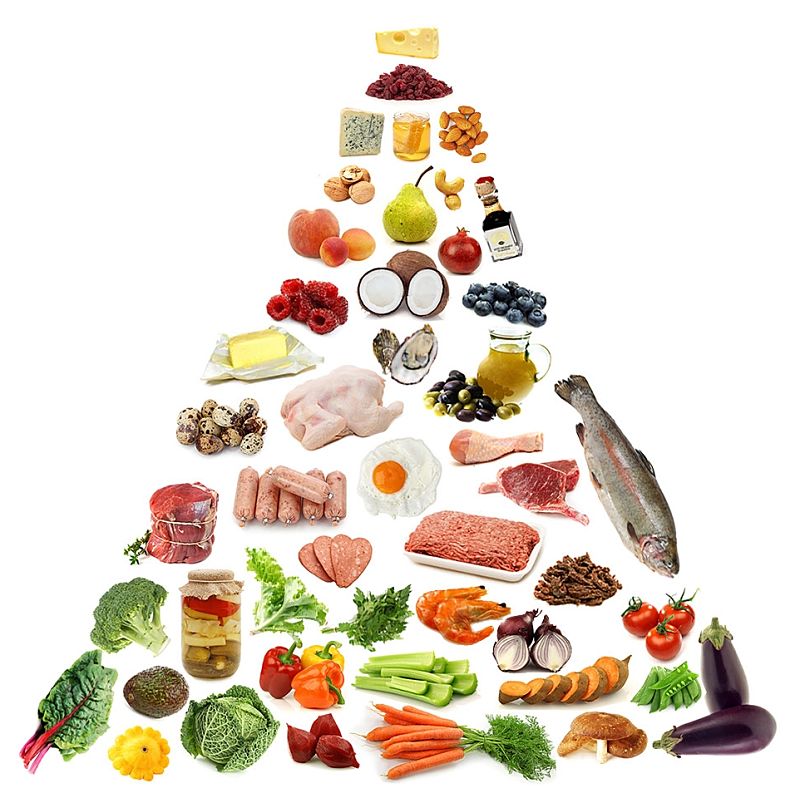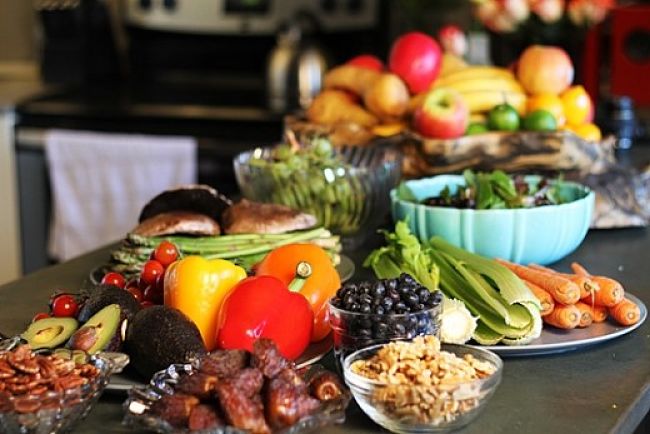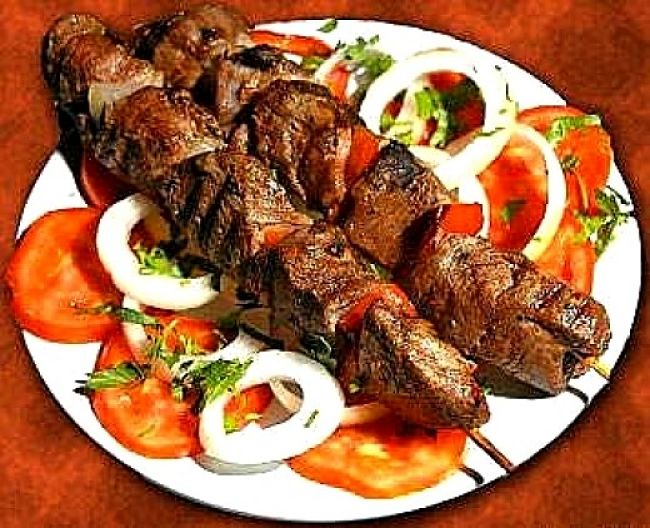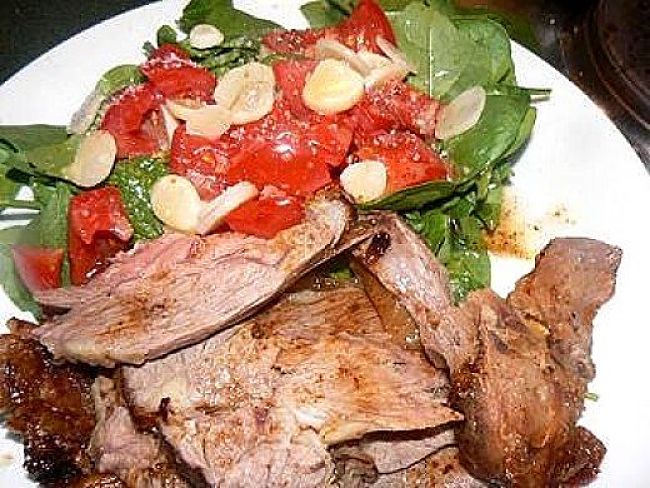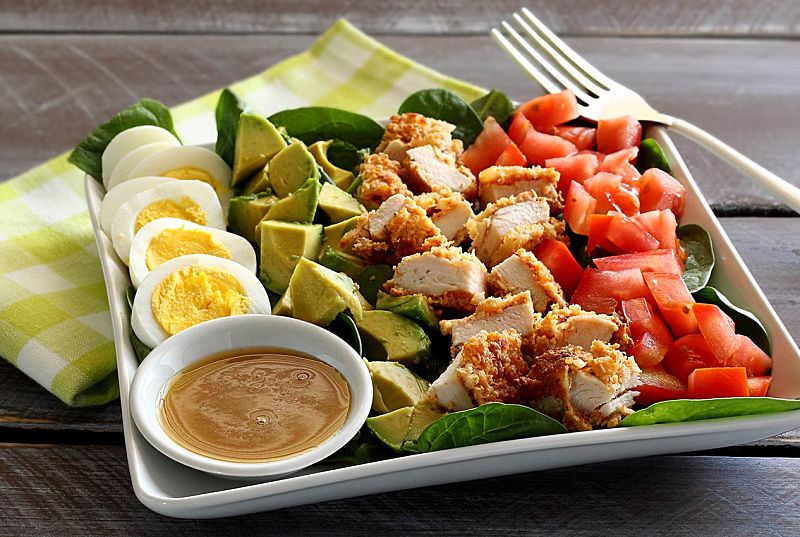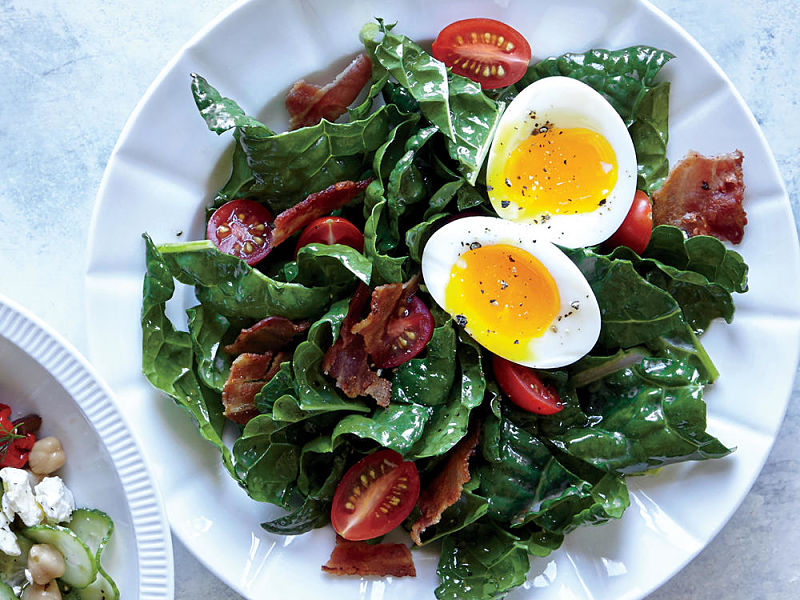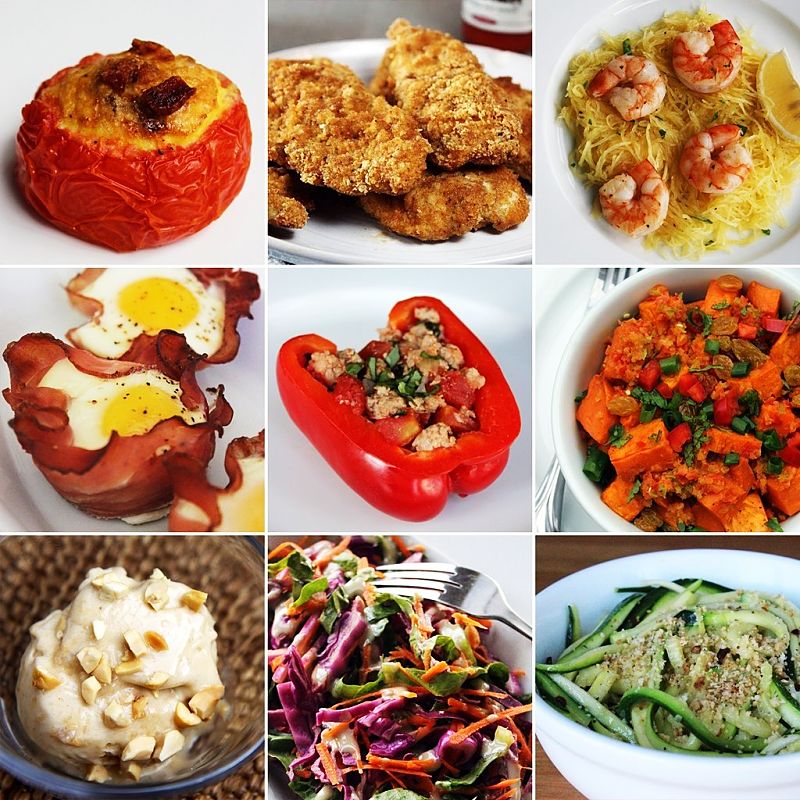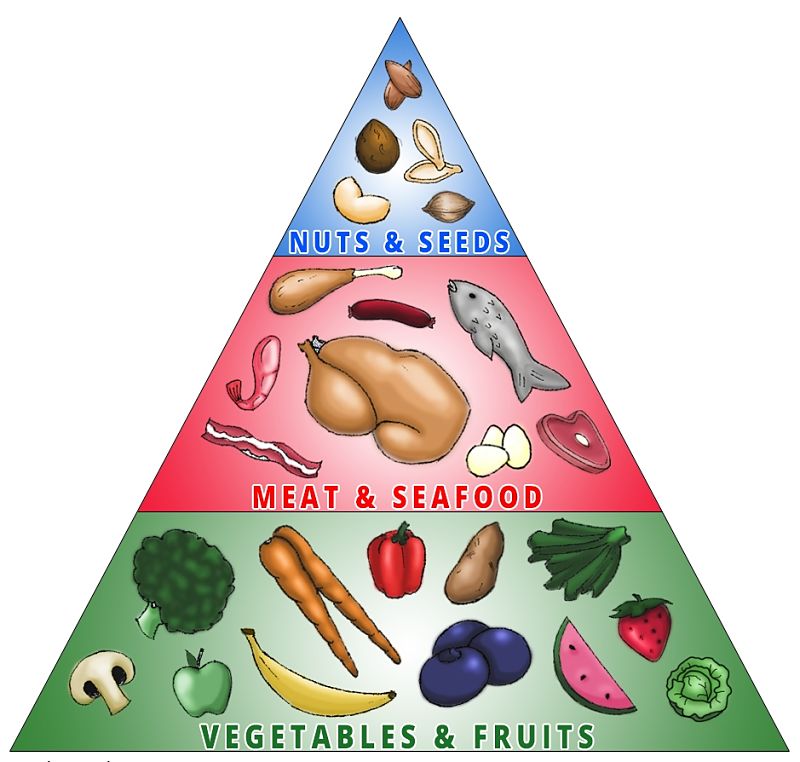Paleo Diet Food List, Menu, Recipes - Caveman, Paleolithic Foods
The Paleo diet, also called the 'Caveman Diet' or the 'Paleolithic Diet', is focused on eating whole foods such as fruit, vegetables, nuts and meat and eliminating processed foods such as carbohydrates. It is a low-carb diet, but not a high-protein diet such as the Aitkins Diet, which restricts all carbohydrate such a fruit and vegetables. The basis for the diet is that humans evolved thousands of years ago with their diet based on a gathering and hunting lifestyle, with very little grain cultivation. The foods eaten were game meat, fish, vegetables, wild fruits, eggs, seeds and nuts. This diet high in animal fat and proteins and low in starch-based carbohydrates in wheat oats and rice which would have only been eaten in small amounts as individual seeds. The idea is that human genetics and physiology were adapted to eat wild foods - game, fruit, nuts and seeds.
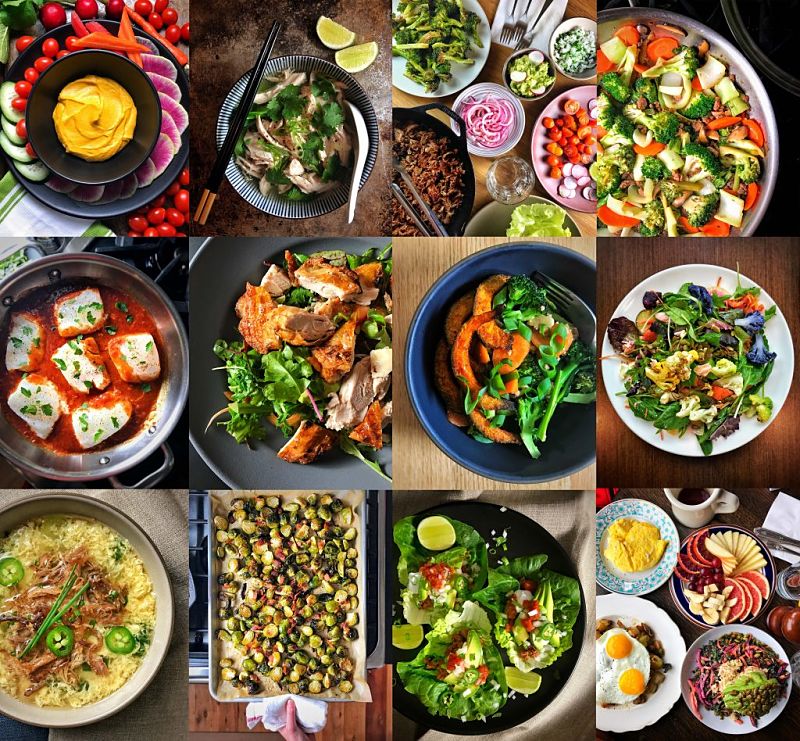
Dr. Cordain, who originated this diet has authored several pioneering books that provide specific applications of The Paleo Diet for general health, recipes and nutrition, specifically for athletes, and for curing acne.
Advocates of this diet argue that, some of the foods that we started eating in large quantities in modern types such as processed grains, sugar, vegetable oils, legumes and dairy products are completely foreign to our genetics and metabolism, and are the probably causes of many of the health problems seen in modern man. This includes obesity, hypertension, type 2 diabetes, heart disease, auto-immune diseases, osteoporosis, and possibly Alzheimer’s and any other diseases and aliments that were probably unknown to our ancestors but are common today.
Many people have criticised the diet because no one knows EXACTLY how our ancestors ate, and there is a lot variability based on the climate, culture, location and geography. The amount of carbohydrates eaten could have varied substantially. For the Intuit traditionally ate virtually no carbohydrates and has a large amount of fat in their diets.
Others have criticised the elimination of starchy carbohydrates and whole grains such as brown rice wheat, rolled oats and rye which are very minimally processed whole foods and are very different from the highly processed and refined white flours,starches and grains. There is some debate about how much carbohydrate should be in the diet, because fruit and vegetables are rich in carbohydrate. According to Loren Cordain, the founder of the Paleo Diet, recommended as much as 40% carbohydrate in the diets.
What is the Evidence that the Paleo Diet Works?
A small study published in the European Journal of Clinical Nutrition showed that after a period of only 10 days on a Paleo diet, the test subjects had metabolic and physiological benefits such as lower levels of total cholesterol, reduced blood pressure and reduced amount of insulin secreted after the subjects ingested glucose. This study has been criticised because of the small number of people involved.
The results of another 3-month study, showed that the paleo diet increased glycaemic control and reduced heart risk factors in a group of subjects with type 2 diabetes. The diet was also shown to have anti-inflammatory benefits.
In an interesting researchers monitored 10 middle-aged Australian Aborigines who had lived most of their lives as hunter gatherers, but then were brought into a developed community with access to western foods. All ten subjects became overweight and developed type 2 diabetes, which exemplified the dangers of modern diets compared with traditional diets. The researchers then asked the same 10 middle-aged subjects to go back to their original lifestyle as hunter gatherers for a period of seven weeks. Instead of corn, white bread, powdered milk, sugar and various canned foods, they reverted to eating the traditional fresh foods: crocodiles, kangaroos, birds, shellfish, bush honey, turtles, figs, yams, yabbies (freshwater crayfish) and various freshwater fish. At the end of the experiments, blood cholesterol fell by about 10 %, the average weight loss was 16.5 lbs and triglycerides in the blood were reduced by a about 70 %. Their insulin and glucose metabolism reverted to normal, and their effectively lost their diabetes.
Another diet compared 29 patients that had type 2 diabetes and heart disease symptoms, Half the group were placed on a Paleo diet and the other half on a Mediterranean diet. The latter is based on low-fat dairy products, whole grains, vegetables, fruits, fish, olive oils and margarines. The main difference was that the Paleo diet excludes dairy products, grains and margarines, that are a prominent part of the Mediterranean diet. After 12 weeks the blood glucose tolerance test was significantly better for the Paleo dieters.
In another study in 2008 study (2008) 14 healthy subjects were monitored after being out onto a Paleo diet. After three weeks the subjects had lost weight, their waist measurement had declined, they showed reduced blood pressure.
In 2009, 9 sedentary subjects were placed on a Paleo diet for a short period of ten days. The Paleo diet was carefully matched to the same number of calories as the subject's usual diet. The subjects showed improvements in blood pressure, circulation, insulin metabolism, total cholesterol and blood triglycerides levels.
Another study conducted in 2009 compared the effect a Paleo diet to a normal diet recommended for people with type 2 diabetes. The diabetes diet was designed to increase the consumption of cereals, low fat dairy products and whole grain bread, vegetables and fruits while restricting animal foods. In contrast, the Paleo diet had lower proportions of dairy products, cereals, bakery foods and beans, and had higher proportions of fruits, meat, vegetables and eggs. In this experiment the diets were swapped for each of the 13 subjects. One group ate one diet for three months and then swapped and ate the other diet for the following three months.
The Paleo diet produced increased weight loss, reduced waist size, lower blood pressure, cholesterol, triglycerides and blood glucose.
What is the Evidence that the Paleo Diet Works?
A small study published in the European Journal of Clinical Nutrition showed that after a period of only 10 days on a paleo diet, the test subjects had metabolic and physiological benefits such as lower levels of total cholesterol, reduced blood pressure and reduced amount of insulin secreted after the subjects ingested glucose. This study has been criticised because of the small number of people involved.
The results of another 3-month study, showed that the paleo diet increased glycaemic control and reduced heart risk factors in a group of subjects with type 2 diabetes. The diet was also shown to have anti-inflammatory benefits.
In an interesting researchers monitored 10 middle-aged Australian Aborigines who had lived most of their lives as hunter gatherers, but then were brought into a developed community with access to western foods. All ten subjects became overweight and developed type 2 diabetes, which exemplified the dangers of modern diets compared with traditional diets. The researchers then asked the same 10 middle-aged subjects to go back to their original lifestyle as hunter gatherers for a period of seven weeks. Instead of corn, white bread, powdered milk, sugar and various canned foods, they reverted to eating the traditional fresh foods: crocodiles, kangaroos, birds, shellfish, bush honey, turtles, figs, yams, yabbies (freshwater crayfish) and various freshwater fish. At the end of the experiments, blood cholesterol fell by about 10 %, the average weight loss was 16.5 lbs and triglycerides in the blood were reduced by a about 70 %. Their insulin and glucose metabolism reverted to normal, and their effectively lost their diabetes.
Another diet compared 29 patients that had type 2 diabetes and heart disease symptoms, Half the group were placed on a Paleo diet and the other half on a Mediterranean diet. The latter is based on low-fat dairy products, whole grains, vegetables, fruits, fish, olive oils and margarines. The main difference was that the Paleo diet excludes dairy products, grains and margarines, that are a prominent part of the Mediterranean diet. After 12 weeks the blood glucose tolerance test was significantly better for the Paleo dieters.
In another study in 2008 study (2008) 14 healthy subjects were monitored after being out onto a Paleo diet. After three weeks the subjects had lost weight, their waist measurement had declined, they showed reduced blood pressure.
In 2009, 9 sedentary subjects were placed on a Paleo diet for a short period of ten days. The Paleo diet was carefully matched to the same number of calories as the subject's usual diet. The subjects showed improvements in blood pressure, circulation, insulin metabolism, total cholesterol and blood triglycerides levels.
Another study conducted in 2009 compared the effect a Paleo diet to a normal diet recommended for people with type 2 diabetes. The diabetes diet was designed to increase the consumption of cereals, low fat dairy products and whole grain bread, vegetables and fruits while restricting animal foods. In contrast, the Paleo diet had lower proportions of dairy products, cereals, bakery foods and beans, and had higher proportions of fruits, meat, vegetables and eggs. In this experiment the diets were swapped for each of the 13 subjects. One group ate one diet for three months and then swapped and ate the other diet for the following three months.
The Paleo diet produced increased weight loss, reduced waist size, lower blood pressure, cholesterol, triglycerides and blood glucose.
Diet Plan and Food list.
Shown below are two daily diet plans and a list of recommended foods for the Paleo Diet.
Diet Plan
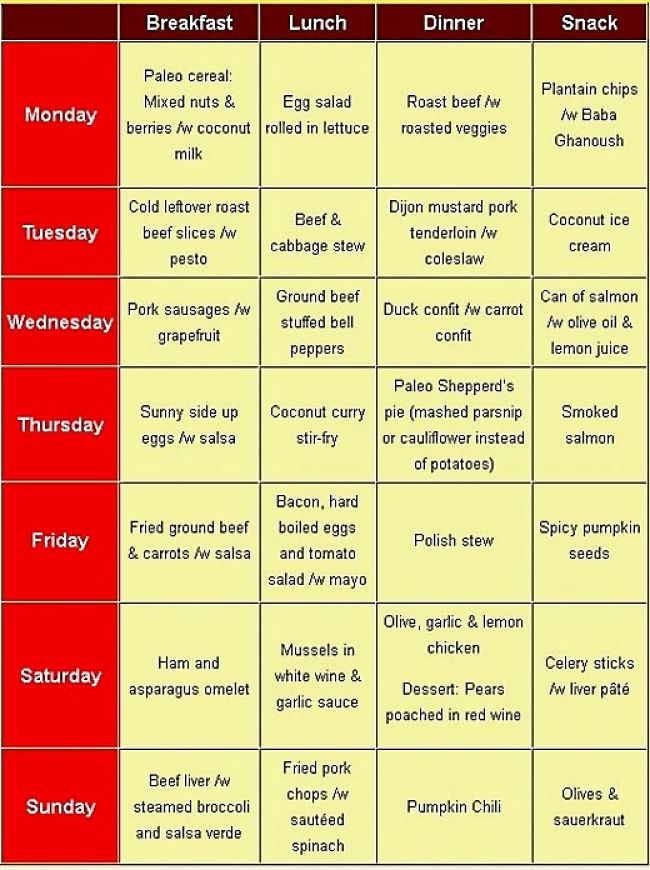
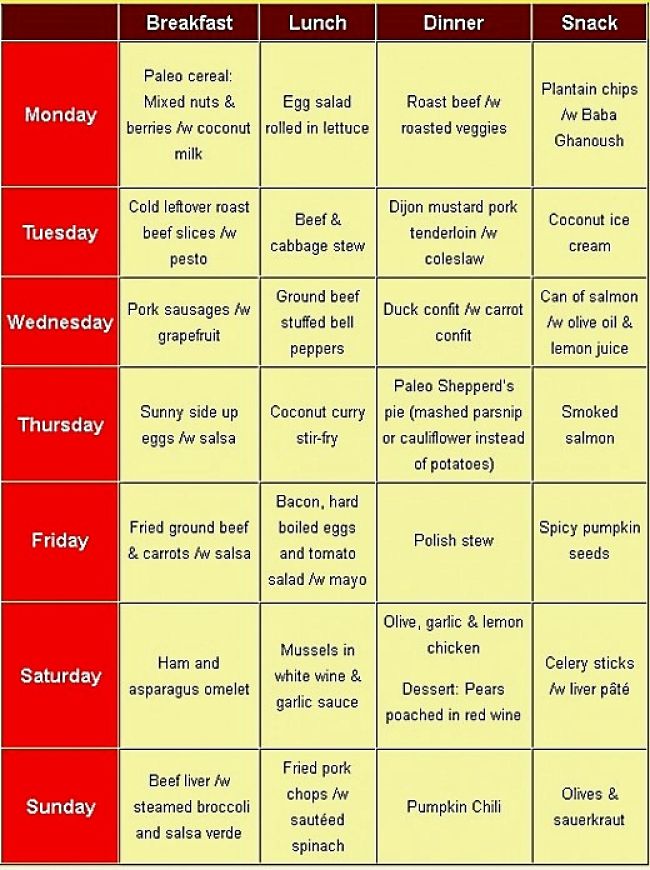
Paleo Diet Food List
|
Type
|
Food
|
|---|---|
|
Meat
|
wild boar, bison, horse, sheep, goat, rabbit, veal, lamb, pork and beef
|
|
Game Meat
|
wild turkey, reindeer, rabbit, duck, elk, woodcock, moose, bear, pheasant and deer
|
|
Poultry
|
goose, quail, duck, turkey and chicken
|
|
Fish
|
herring, anchovy, mackerel, grouper, flatfish, cod, tilapia, walleye, turbot, haddock, sole, halibut, bass, trout, tuna, salmon and sardines
|
|
Shellfish
|
mussels, oysters, clams, scallops, shrimps, lobster and crab
|
|
Fats and Oils
|
coconut milk, coconut flesh, macadamia, walnut, nut oils, nut butters, salmon, mackerel, sardines, lamb fat, veal fat, duck fat, tallow, lard, ghee, clarified butter, butter, coconut oil, olive oil, avocado oil and avocados
|
|
Eggs
|
quail eggs, goose eggs, duck eggs and chicken eggs
|
|
Vegetables - General
|
avocados, okra, artichokes, Brussels sprouts, cabbage, cucumber, asparagus, broccoli, cauliflower, eggplants, green onions, kohlrabi, leeks, onions, bell peppers, tomatoes and celery
|
|
Vegetables - Green Leafy
|
radicchio, chicory, rapini, bok choy, rocket, arugula, endive, seaweeds, turnip greens, watercress, swiss chard, dandelion, mustard greens, beet top, kale, collard greens, spinach and lettuce
|
|
Vegetables - Root
|
cassava, yams, jerusalem artichokes, radish, sweet potatoes, rutabaga, parsnips, turnips, beets and carrots
|
|
Winter Squash
|
buttercup squash, pumpkin, acorn squash and spaghetti squash
|
|
Summer Squash
|
yellow crookneck squash, yellow summer squash and zucchini
|
|
Fruits
|
persimmon, passion fruit, dates, figs, coconut, tangerine, mango, lychee, lime, lemon, kiwi, honeydew melon, other melons, apricot, cherries, cantaloupe, grapes, papaya, pineapple, pomegranates, plums, nectarines, peaches, pears, grapefruit, blackberry, blueberry, cranberry, cranberry, strawberry, oranges, apples, bananas and strawberries
|
|
Nuts and Seeds
|
hazelnuts, almonds, cashews, chestnuts, macadamia nuts, pine nuts, walnuts, pecans, pumpkin seeds, sesame seeds, sunflower seeds, Brazil nuts and pistachios
|
|
Mushrooms
|
porcini, crimini, chanterelle, shiitake, oyster mushroom, portabello, button mushrooms and many more
|
|
Fresh Herbs
|
coriander, bay leaves, dill, sage, oregano, tarragon, chives, rosemary, basil, mint, lavender, thyme and parsley
|
|
Spices
|
chilies, cloves, vanilla, paprika, nutmeg, cinnamon, turmeric, cumin, cayenne pepper, mustard seeds, fennel seeds, star anise, hot peppers, black pepper, onions, garlic and ginger
|
